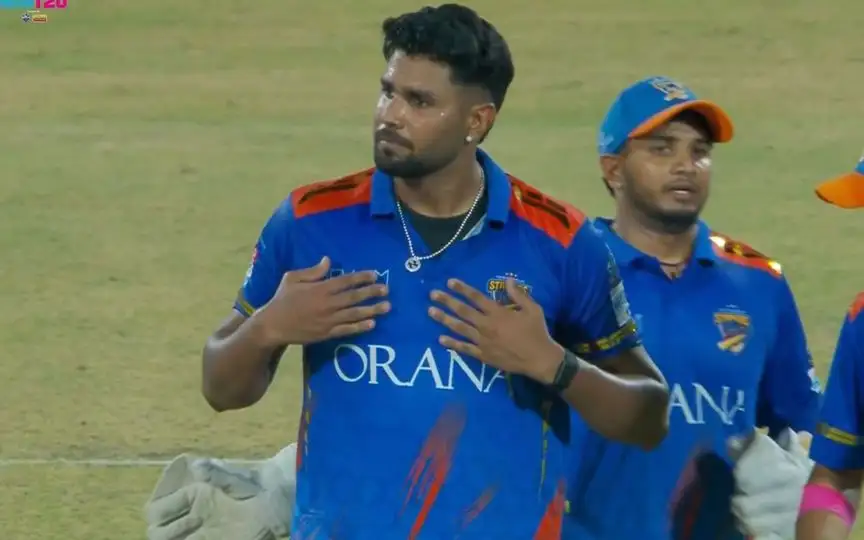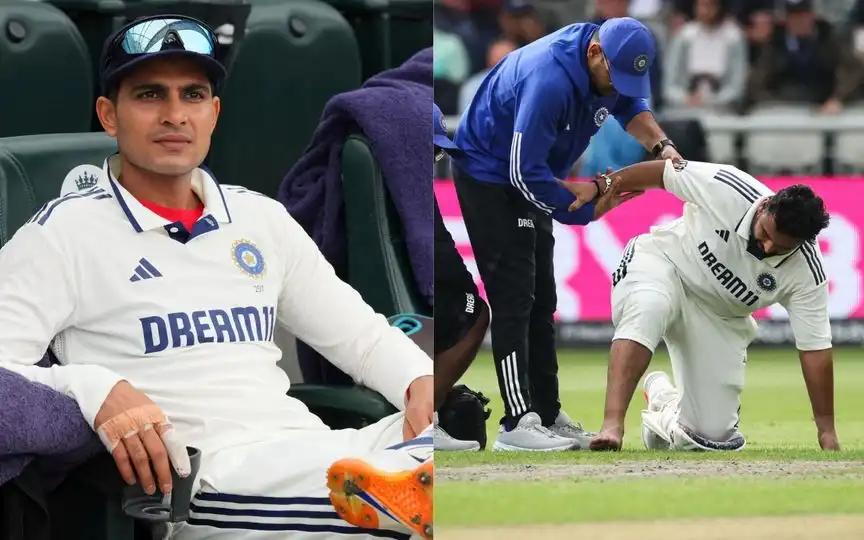![Indian pace battery in Test cricket in under deep crisis [Source: AP]](https://onecricketnews.akamaized.net/parth-editor/oc-dashboard/news-images-prod/1754583168848_Mohammed_Shami_Jasprit_Bumrah_India.jpg?type=hq) Indian pace battery in Test cricket in under deep crisis [Source: AP]
Indian pace battery in Test cricket in under deep crisis [Source: AP]
"To be a great fast bowler, you need to have a big heart and a big bottom." These iconic words by Fred Trueman, arguably the greatest pacer England has ever produced, underline what fast bowling actually requires; physical toughness, mental determination, and a mastery of an art form that remains inherently unnatural to the human body.
Fast bowling is not simply about raw power. It involves a complex sequence of jumping, sprinting, and transferring body weight to the knees, shoulders, back, and ankles, repeatedly and with precision. It’s no surprise, then, that prolonged exposure to this unnatural exertion results in injury. Sadly, no country knows this better right now than India.
A Red-Ball Crisis Brewing In Indian Cricket
During the high-profile 2025 Anderson-Tendulkar Trophy, only Mohammed Siraj managed to play more than three Tests. Jasprit Bumrah, India’s pace spearhead, was put under a strict workload management regime given his susceptibility to back injury.
Akash Deep broke down with a groin injury mid-series, and even when he returned, he was not as intense as he used to be. Debutant Anshul Kamboj, known for having an average speed of 135 kph, only managed 120-125 kph with low intensity in Manchester Test. Mohammed Shami, India's one of the best red-ball players, hasn't featured in a Test since 2023, hounded by repeated injuries despite long rehabilitation periods.
This trend is deeply alarming. Out of a very small pool of impactful fast bowlers, only Siraj has exhibited the fitness and consistency required to endure a demanding red-ball series. Is the issue simply bad luck, or is something more fundamental at play?
Are Modern Fast Bowlers Over-Engineered?
![Jasprit Bumrah and Mayank Yadav in gym [Source: @doncricket_, @Prakash29484476/X.com]](https://onecricketnews.akamaized.net/parth-editor/oc-dashboard/news-images-prod/1754583975472_Mayank_Yadav_Jasprit_Bumrah_India.jpg?type=mq) Jasprit Bumrah and Mayank Yadav in gym [Source: @doncricket_, @Prakash29484476/X.com]
Jasprit Bumrah and Mayank Yadav in gym [Source: @doncricket_, @Prakash29484476/X.com]
Before we dive into the causes of the injury crisis in the Indian fast bowling crop, let’s understand how our pace attack has evolved through the eras. Historically, only two Indian pacers, Kapil Dev and Ishant Sharma, have crossed 100 Tests. Despite limited resources, older generations stayed fit longer. How? They bowled. A lot. Kapil Dev famously said his generation spent two hours in the nets daily, letting their bodies adapt naturally to the rigours of pace bowling.
Today, modern bowlers are more reliant on gym work, tailored strength routines, and fitness coaches. While science and technology have their place, many argue that it has come at the cost of mastering the basics. Bowling long spells in training, once the foundation of a pacer's career, has become rare. As Kapil once quipped, today’s fast bowlers "bowl 30 deliveries in the nets and leave." While change is the only constant, was it necessary, though?
Fast Bowlers Are Not Robots – India Must Stop Treating Them Like One
This is not just a player issue; the system is complicit. The BCCI, in its pursuit of all-format success, has overburdened its pace arsenal. Rookie Harshit Rana debuted in all three formats within four months. Veterans like Bumrah and Mohammed Siraj regularly juggle Tests, ODIs, T20Is, and IPL commitments with minimal recovery time. The stress of switching formats, combined with constant travel and workload, inevitably invites injury.
Moreover, the mismanagement of rare express pacers has become an unfortunate trend. Umran Malik and Mayank Yadav offered rare 150+ kph excitement but quickly succumbed to injury, a fate that previously befell talents like Varun Aaron and Umesh Yadav. Clearly, identifying speed is easy; preserving it is where India falls short.
Time Is Running Out For India To Sustain Pace Dominance
![Mohammed Siraj in action during fifth Test between India, England [Source: @SriniMaama16/X.com]](https://onecricketnews.akamaized.net/parth-editor/oc-dashboard/news-images-prod/1754584107125_Mohammed_Siraj_India.jpg?type=mq) Mohammed Siraj in action during fifth Test between India, England [Source: @SriniMaama16/X.com]
Mohammed Siraj in action during fifth Test between India, England [Source: @SriniMaama16/X.com]
The pattern of frequent injuries to Indian pacers had stirred up the narrative of this being the weakest generation of fast bowlers. However, that is far from the truth.
Yes, modern-day quicks are no match for Brett Lee or Shoaib Akhtar. However, a generation tends to evolve from time to time. Mohammed Siraj is an elite example of how a right training regime and raw build-up can promote longevity in the Test format.
The BCCI has initiated fast-bowling contracts and exclusive training camps as some primary measures. But nurturing fast bowling talent is more than infrastructure; it's about shifting philosophy.
Diet is one critical but overlooked factor. Mayank Yadav candidly admitted that his frequent breakdowns stemmed from an imbalanced diet lacking essential protein, an issue he only learnt about after breaking down.
Then there's the obsession with extreme pace. While clocking 150 kph is thrilling, it’s not sustainable for every bowler. If longevity in Test cricket requires modifying action or sacrificing a few clicks in speed, that trade-off must be considered.
A Red-Ball Blueprint: Specialisation Is Key
Perhaps the biggest lesson comes from how successful teams build their Test attacks. Most have red-ball specialists, bowlers conditioned exclusively for the longest format. India, too, must adopt this model. Not every pacer needs to play every format. Dedicated training, longer recovery windows, and consistent red-ball exposure are vital to keeping bowlers fresh and effective.
Final Word: The Talent Is There, But The System Must Adapt
![India celebrating Oval Test win [Source: @drivexpull/X.com]](https://onecricketnews.akamaized.net/parth-editor/oc-dashboard/news-images-prod/1754584431133_Indian_Fast_Bowlers.jpg?type=mq) India celebrating Oval Test win [Source: @drivexpull/X.com]
India celebrating Oval Test win [Source: @drivexpull/X.com]
Labelling this the “weakest generation” of Indian pacers would be premature and inaccurate. Siraj’s success is proof that modern-day quicks can thrive when trained and managed the right way. The issue isn’t lack of talent; it’s lack of direction.
India is brimming with fast bowling potential. But unless the system stops over-engineering bodies, neglecting diets, and skipping basic workload-building routines in the nets, India risks wasting an entire generation of quicks.
In the end, fast bowling is not a gym routine. It’s a craft, and like all crafts, it requires discipline, time, and respect for fundamentals. The ball is now in the BCCI’s court. Will they protect their future Sirajs or repeat the mistakes of the past? Only time will tell.






